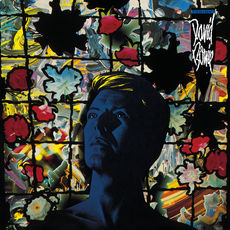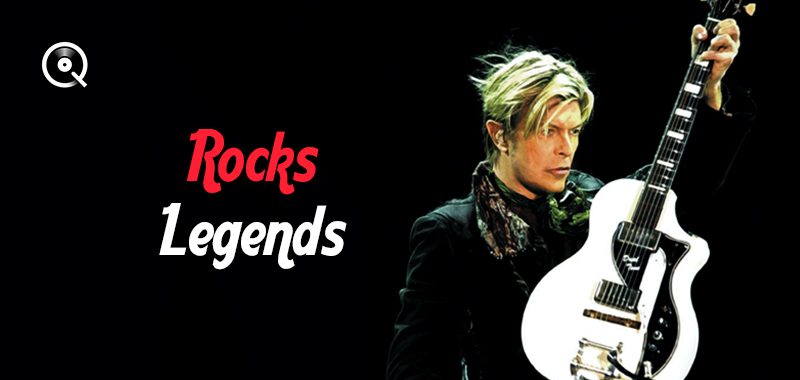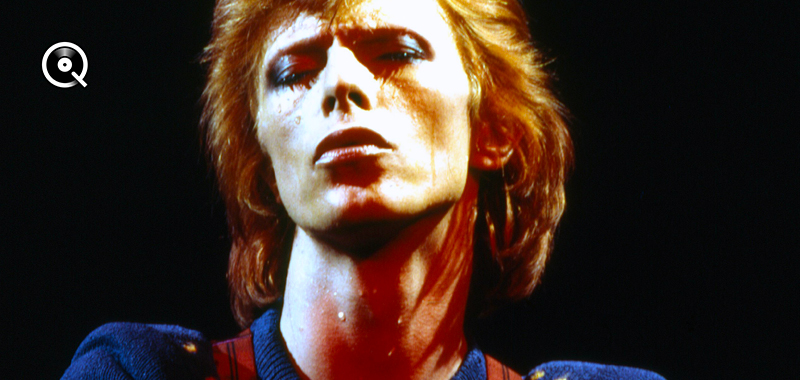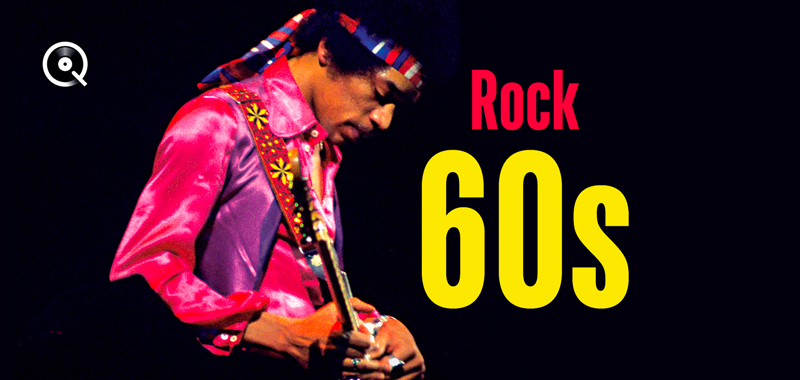Passing through decades, fashions and pop culture effortlessly, Bowie earned his reputation as a musical chameleon, successfully reinventing himself on a regular basis... Whether it was glam rock, new wave, funk or soul, disco or electro, Bowie tackled every genre, sometimes even far ahead of their time. Major Tom to Ziggy Stardust, Aladdin Sane to Thin White Duke, he invented and reinvented, metamorphosed and transformed. He travelled around the world, from London to New York via Berlin. It was a geographical, physical, intellectual, and quite fascinating mix of elements that made David Bowie a world icon of modern culture and a pioneer of pop music. He was an icon who confidently showed off the androgynous image he took on.
He dominated popular culture and music for decades. The boy born under the name of David Jones in London on the 8th January 1947 went on to do great things in the 70s and 80s. As a fan of literature, jazz and theatre, the young man began to search for the music inside of him. In 1971, with the album Hunky Dory, former model David Jones now goes by David Bowie, and fully takes on his colourful ambitions and emphasizes the complexity and plurality of his style: an androgynous look, scandalous attitudes, complex arrangements, veneration for the great icons of the time (Warhol and Dylan are openly mentioned). Musically, there is a wealth of diverse and truly unique melodies, a firework guitar display by Mick Ronson ('Queen Bitch'), an ominpresence of piano ('Oh! You Pretty Things', 'Life On Mars?') and well-licked guitar frets (Quicksand). The album Space Oddity, which was released in the same period, is another masterpiece of eclecticism in what was an impressive beginning to his career.
In 1972, with Ziggy Stardust, everything changes! It's a flood of glamrock, the arrival of various personas (Ziggy here and later the Thin White Duke, Halloween Jack, Aladdin Sane), but Bowie himself is at the heart of this precursor concept album. One might say it was ahead of its time, but the mutant Ziggy shocked both musically and visually — a sustained delirium that oozes from the very pen of its author. Here is erected a tower of Babel where Oscar Wilde, science fiction, Vince Taylor and a whole bunch of idols and ideas collide, like in the attic of Lewis Carroll's Alice... The androgynous aspect to Bowie can be felt in this electric and at times sexual rock and roll ('Moonage Daydream'). Ziggy Stardust mostly offers staggering compositions such as 'Starman', 'Ziggy Stardust', 'Rock’n’Roll Suicide' or perhaps 'Suffragette City', which foreshadowed the punk genre.
Walking in the shoes of Ziggy Stardust, Aladdin Sane (another persona invented by Bowie) brings substance to his glam rock. Ronson's shaggy lead guitar ('The Jean Genie') is offset by calmer tracks where Mike Garson's piano holds down the fort ('Lady Grinning Soul' and 'Aladdin Sane'). It is an extravagant, decadent cabaret, where David Bowie welcomes once again a barrage of mismatched textures, strange creatures and various fragrances. This decade is that of the advent of disco and its off-shoots, and Bowie could hardly miss such a phenomenon. With Diamond Dogs in 1974 and, in particular, Young Americans the following year, soul and funk sneak into his rock sound. This 'groovy' Bowie would be rapidly eclipsed by a much colder, cerebral and experimental Bowie. First envisioned in Los Angeles, Station To Station, released in January 1976, was the album that bridged that transition, keeping one foot in soul while starting to include electronic and synthetic influences from Europe (namely, Kraftwerk) in order to deliver yet another hybrid album from outer space...
Always ready to reinvent himself, to follow the trends (or create them...), and to question everything, he flies out to Berlin. In the company of ex-Roxy Music member Brian Eno, he conceives his famous Berlin trilogy, beginning with Low (Heroes and Lodger to follow). With the wonderful Low, everything starts with a strange soul baroque instrumental with electronic textures. By this point he is producing futuristic soul music ('Sound And Vision'), somber and mysterious symphonies ('Warszawa'), new-wave minimalism close to a science-fiction film soundtrack ('Art Decade') or disjointed and cubic rock and roll ('Breaking Glass'). David Bowie takes us back to the Krautrock of groups like Neu!, Can and Faust, playing with Kraftwerk equipment but staying true to his vision—a wise but ingenious madman way ahead of his time.
Heroes, released shortly after in October 1977, follows essentially the same formula but from a less 'cold' angle. Still walled inside the Teutonic fortress, his music feels lightyears away from the hot-headed punk resonating throughout his native England. Surrounded by bizarre electronic music machines (once again programmed and played by Brian Eno) and alien guitars (performed by Robert Fripp, ex-member of King Crimson), Bowie channels his experiments with electronic flavours ('Neukölln') into compositions with more accomplished melodies ('Heroes', 'The Beauty And The Beast', 'Joe The Lion'). Heroes is, above all, the cult classic that was to define New Wave as well as the Cold Wave that was to come...
After this pioneering Berlin trilogy, the Briton leaves behind the coldness (but certainly not the madness) of his style with Scary Monsters (And Super Creeps), released in 1980. Between modern funk ('Fashion' and its angular groove) and revisiting new wave ('Ashes To Ashes'), he paints a new rainbow in the sky, still as dense and in tune with the various trends of the time. A perfect link between the 70's and 80's, this neo punk cabaret contains especially powerful compositions, and is daring in form. Always in search of the unexpected, the Thin White Duke even took a post-Television song by Tom Verlaine ('Kingdom Come'), invited Pete Townshend of The Who to play over 'Because You're Young', and, on over half the tracks, invited Robert Fripp to play some crazy guitar sequences.
Three years on from Scary Monsters, Bowie put his heart and soul into the MTV era with what was one of his biggest commercial successes - one which was effectively a hit machine of funky pop and new wave, and which continued to delight his fans. Produced by Chic's Nile Rodgers, Let’s Dance welcomed great Texan guitarist Stevie Ray Vaughan and boasts some great hits like 'China Girl' (co-written 5 years earlier with Iggy Pop for The Idiot) and the energetic 'Modern Love'. The Thin White Duke sings like never before and his single 'Let’s Dance' is heard on dancefloors across the globe... Even for the not-so-hardcore fans who might claim that Bowie followed the easy path of pop soul, Let’s Dance carries its name well and has aged like a fine wine. A year later, the album Tonight, and especially the single 'Blue Jean' saw the icon continue to ride the wave of success.
During the 90s, David Bowie is in cruise control. Eager for new experiences, but aware that rap and grunge attract young audiences more, he is conscious of being of less interest to the crowds. He begins to experiment with more electronic rock, as is demonstrated on Black Tie White Noise in 1992, Outside in 1995, Earthling in 1997 and Hours... in 1999. In 2013 a rumour suggests that Bowie is at death's door when he releases The Next Day, an earth-shattering comeback record. At 66 years old, the Thin White Duke signs off on an album that manages to be both contemporary and Bowie-esque. Fleshed out with guitars, Next Day harks back to Berliner Bowie (with the revisited cover from Heroes) just as much as Ziggy Stardust, Scary Monsters, Heathen or Reality. Above all, the musician brings us even more huge hits, carried by that unique voice which has barely been touched by time. A powerful comeback!
There's hardly time to digest everything before he presents us the fascinating Blackstar, his 25th studio album which was released on the very day of his 69th birthday. Once more, Bowie continues to surprise and delight with an experimental work that ranks among his most audacious and versatile (reminding us, at times, of Station To Station). It is a delightful musical oddity that he thought up with brilliant New York jazz artists (including Maria Schneider and her orchestra, as well as guitarist Ben Monder and saxophonist Donny McCaslin) without forgetting his regular partner Tony Visconti, who sat behind the controls to produce this beautiful dark star. On the 10th of January 2016, just 48 hours after the release of the album, the news of his death shook the rock world to its core. Today, he is that star - up there. It's a cliché, but we have to say it. He will live on forever, without a doubt.
Blackstar, the testament album






















![Who Can I Be Now? [1974 - 1976]](https://static.qobuz.com/images/covers/90/11/0190295891190_230.jpg)




